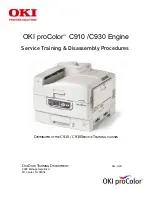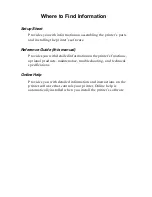
3. PRINTER FUNCTIONS
TPTCM
62
3-
m
n
o
i
t
c
e
r
i
d
l
a
c
i
t
r
e
V
)
1
*
(
n
o
i
t
c
e
r
i
d
l
a
t
n
o
z
i
r
o
H
s
t
o
d
.
N
I
P
D
I
P
D
)
k
(
a
t
a
D
f
o
.
N
0
e
l
g
n
i
s
t
o
d
8
y
t
i
s
n
e
d
8
7
6
0
0
1
6
5
2
x
H
n
+
L
n
1
e
l
b
u
o
d
t
o
d
8
y
t
i
s
n
e
d
8
7
6
0
0
2
6
5
2
x
H
n
+
L
n
2
3
e
l
g
n
i
s
t
o
d
4
2
y
t
i
s
n
e
d
4
2
0
0
2
0
0
1
3
x
)
6
5
2
x
H
n
+
L
n
(
3
3
e
l
b
u
o
d
t
o
d
4
2
y
t
i
s
n
e
d
4
2
0
0
2
0
0
2
3
x
)
6
5
2
x
H
n
+
L
n
(
[Notes]
• The nL and nH commands indicate the number of dots of
the bit image in the horizontal direction. The number of dots
is calculated using: nL + nH
×
256.
• If the bit image data input exceeds the number of dots to be
printed on a line, the excess data is ignored.
• d indicates the bit image data. Set a corresponding bit to 1
to print a dot, or to 0 to not print the dot.
• If the value of m is outside the specified range, nL and data
following it are processed as normal data.
• If the width of the printing area set by GS L and GS W is
less than the width required by the data set using ESC * , the
excess data are ignored.
• To print the bit image use LF, CR, ESC J or ESC d.
• After printing a bit image, the printer returns to normal data
processing mode.
• This command is not affected by the emphasized, double-
strike, underline (etc.) print modes, except for the upside-
down mode.
• The relationship between the image data and the dots to be
printed is as follows:
















































